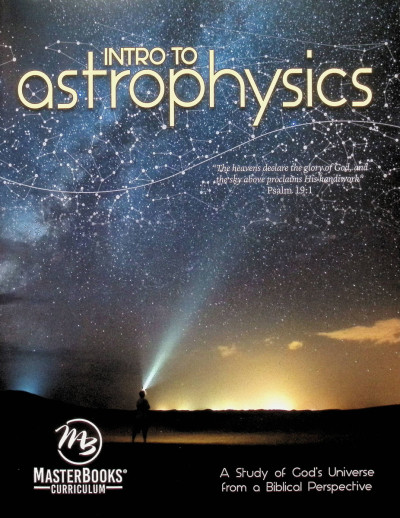We use cookies to make your experience better. To comply with the new e-Privacy directive, we need to ask for your consent to set the cookies. Learn more.
Intro to Astrophysics Student Text
The word "astronomy" comes from two Greek words — one that means "star" and the other that means "to arrange." Thus, very literally, the word astronomy means "to arrange stars." This text focuses on what is known as "astrophysics." This considers what is learned in astronomy, yet goes a little deeper into how the universe began, how it works, and how things like black holes, dark matter, and gravity are used by God to sustain His creation. Genesis 1:1 tells us that God created the heavens, along with the Earth, in the beginning. God made the sun, moon, and stars on the fourth day of creation, and the study of the heavens is the science that the Bible most explicitly mentions. Psalm 19:1 reveals that one purpose for the heavens is that they declare God's glory.
Take your astronomy studies deeper with this course that takes what is learned in astronomy and utilizes physics and chemistry to study origins, how the universe works, and how things like black holes and dark matter fit into God’s creation. This course also covers cosmology, which studies the chronology and nature of the universe. Ultimately, students will grow closer to God through the study of His wondrous creation. KJV Bible is referenced, but students may use a version of their choice for the biblical worldview exercises. Pre-requisites include Algebra 1 and an introductory Astronomy course.
The course begins with a look at astronomy including its history, the planets, solar system, sun, moon, and stars, before the foundational understanding of nature of galaxies, black holes, and dark matter is laid. Students will learn various theories based on evolutionary scientific perspectives and science based on biblical truth and develop a creationist perspective of the heavens.
Required components include the Teacher Guide, Student Textbook, and the project supplies. The Teacher Guide provides a weekly lesson schedule (36 weeks), student worksheets that are reproducible for one family household, the master supply list, activities/projects, lesson quizzes and cumulative tests, and all answer keys. The author expects the course to take 60 minutes per lesson, at a pace of 5 days per week, with flexibility encouraged to meet your individual homeschool needs. The Master Supply List includes a 6” Styrofoam ball, black paint, brush, sketching pages and pencils, camera or smart phone with camera, telescope, night sky app, “Wooly Willy” magnetic toy, and poster board with sketching pencils or markers or a notepad with pencil/pen. Additional household items are referenced in the lessons.
The Student Textbook contains the student readings, a blend of full-color and black and white photographs and illustrations, and highlighted textboxes and vocabulary words. A detailed glossary is included in the back of the book. Written directly to the student, the text is readable and easy to understand. The content is deeper than a typical astronomy course at the high school level, and students should have a foundational understanding of astronomy. Algebra 1 is also a prerequisite. The Student Textbook and Teacher Guide are available separately, or in a set for your convenience.
This well-constructed advanced science course teaches through the traditional topics in the field of Astrophysics through the lens of God’s Word. An excellent opportunity for high school students pursuing a post high school college degree. ~Deanne| Product Format: | Paperback |
|---|---|
| Brand: | Master Book Publishers |
| Grades: | 9-12 |
| ISBN: | 9781683442462 |
| Length in Inches: | 10.875 |
| Width in Inches: | 8.375 |
| Height in Inches: | 0.875 |
| Weight in Pounds: | 2.35 |

